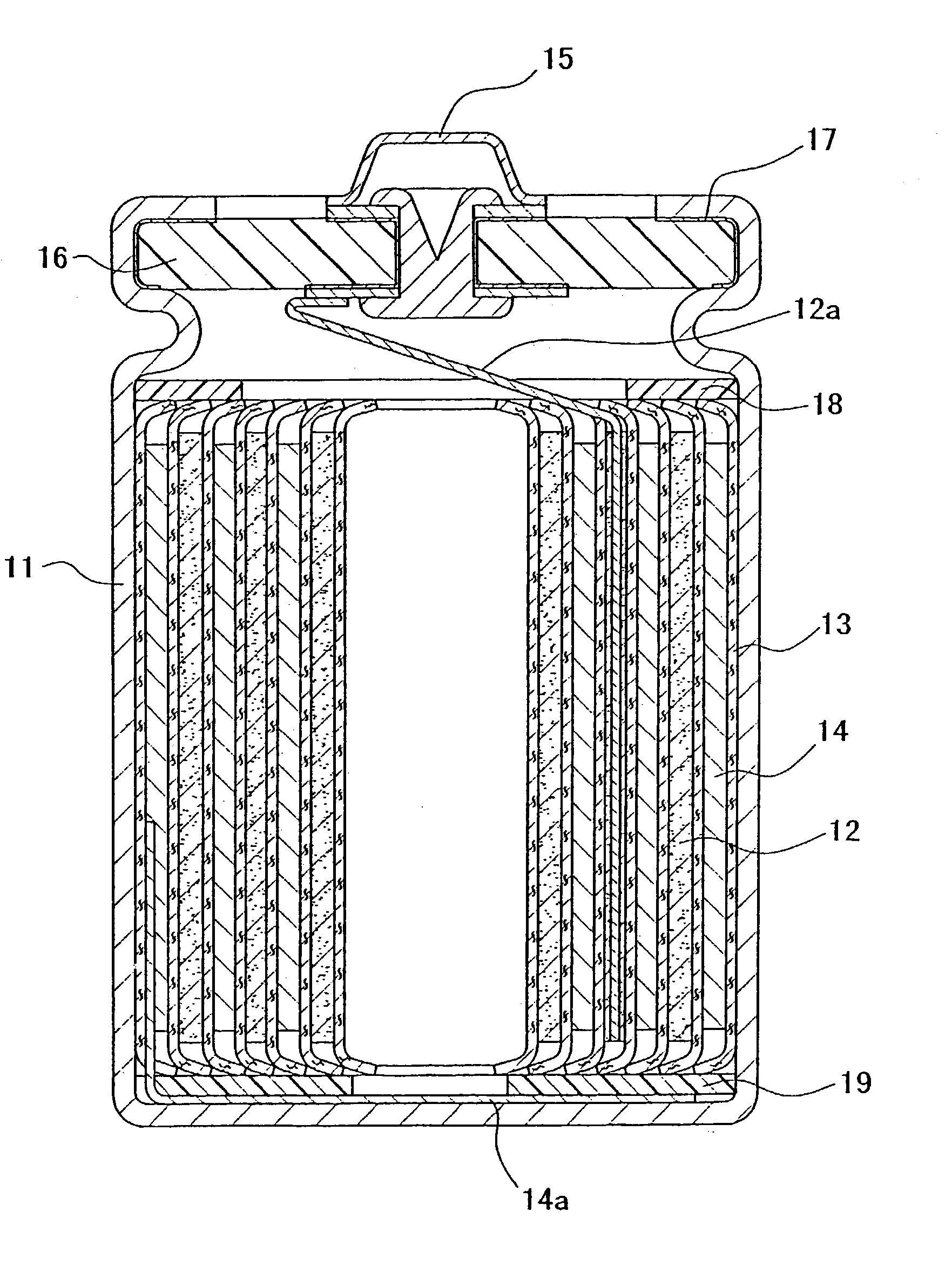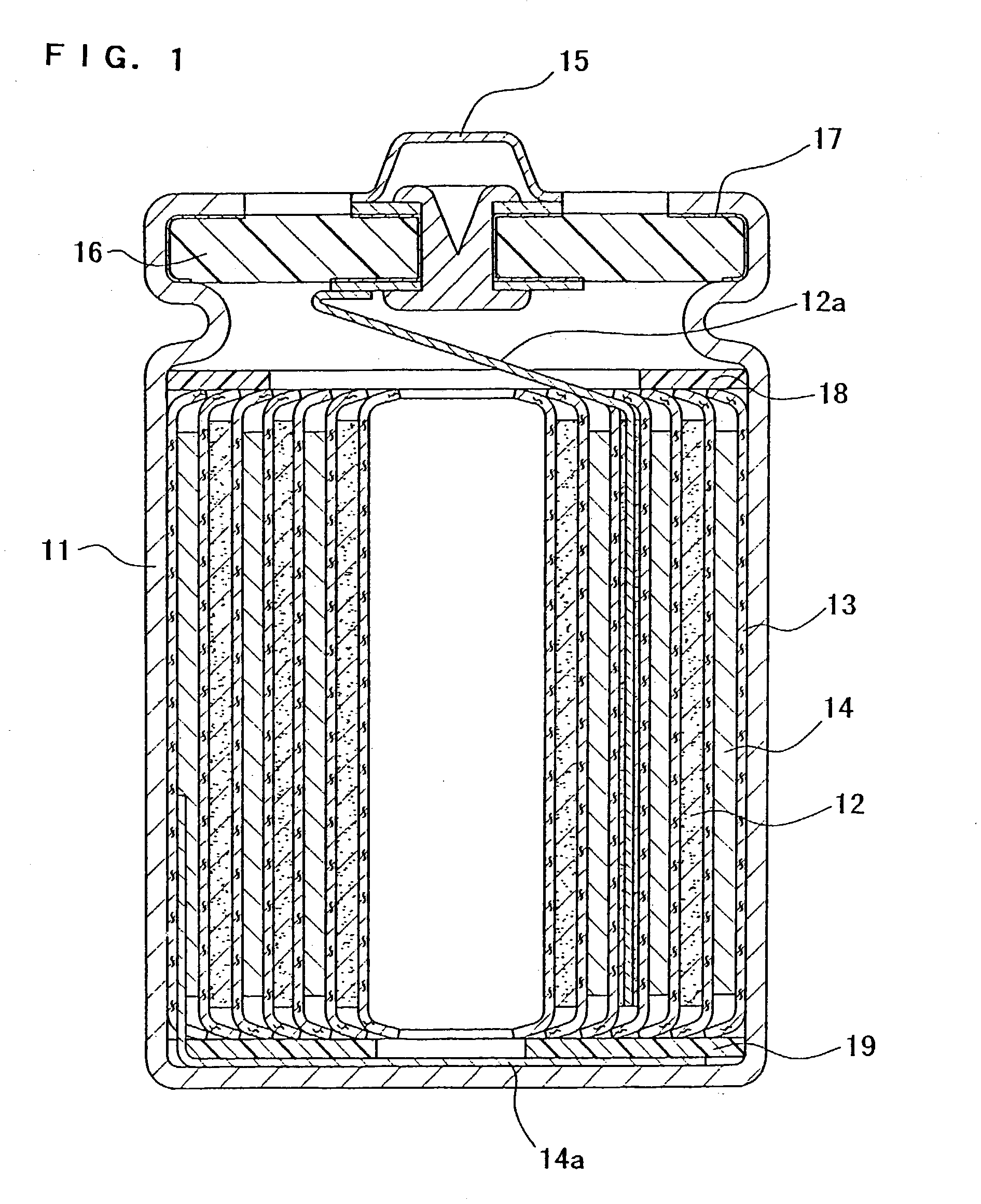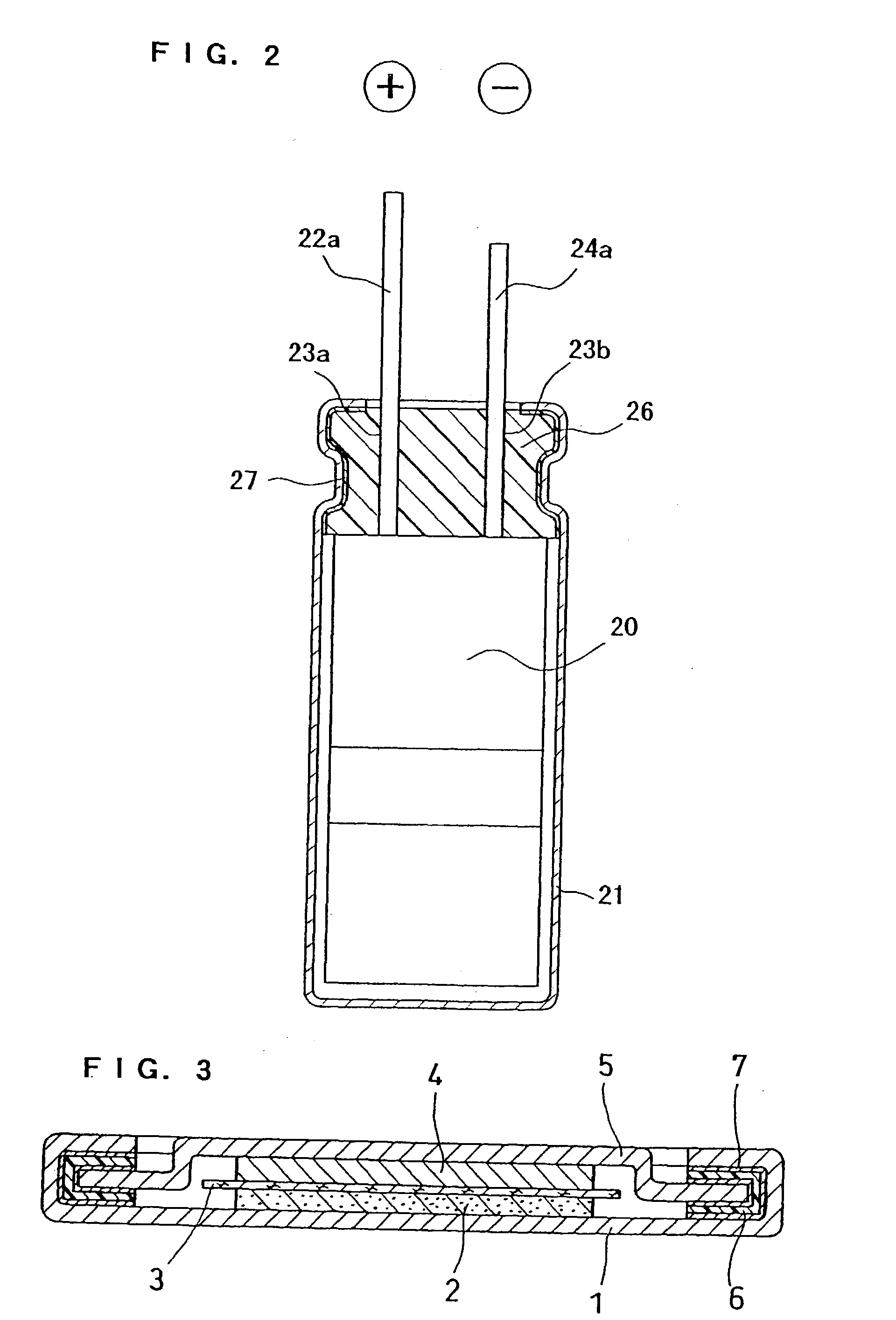Sealing material for electrochemical element and electrochemical element containing the same
- Summary
- Abstract
- Description
- Claims
- Application Information
AI Technical Summary
Benefits of technology
Problems solved by technology
Method used
Image
Examples
example 2
[0053] Except for the use of a sealant prepared by mixing 100 parts by weight of polyisobutylene rubber having a viscosity-average molecular weight of 900,000 with 30 parts by weight of the same tackifier as used in Example 1, Battery B was fabricated in the same manner as in Example 1.
example 3
[0066] Except that the amount of a tackifier contained in a sealant was changed in the range of 3 to 175 parts by weight per 100 parts by weight of butyl rubber, as shown in Table 3, a battery was fabricated in the same manner as in Example 1. However, as the tackifier used was a terpene resin (Pico light A-115 manufactured by Hercules Incorporated).
[0067] Using ten articles each of the obtained batteries, a heat cycle test in which a battery was exposed in cycles to a temperature of -20 to +60 .degree. C. was conducted, to count the number of butteries where liquid leakage has occurred after 250 cycles. The results are shown in Table 3.
3 TABLE 3 Added amount of tackifier Number of occurrence of liquid (parts by weight) leakage 0 5 / 10 3 1 / 10 5 0 / 10 10 0 / 10 30 0 / 10 50 0 / 10 100 0 / 10 125 0 / 10 150 0 / 10 175 3 / 10
[0068] In Table 3, almost no liquid leakage occurs in the batteries added with 3 to 150 parts by weight of the tackifier par 100 parts by weight of the butyl rubber during the hea...
example 4
[0069] Except for the use of a sealant comprising 100 parts by weight of the butyl rubber, 50 parts by weight of the same tackifier as used in Example 1 and 5 parts by weight of dibenzoyl quinone dioxime of a quinone type vulcanizing agent, a battery was fabricated in the same manner as in Example 1.
[0070] Further, using a sealant which comprises 100 parts by weight of the butyl rubber and 50 parts by weight of the same tackifier as used in Example 1 and does not comprise a vulcanizing agent, a battery was fabricated in the same manner as in Example 1.
[0071] Using ten articles each of the obtained batteries, a bending test for evaluating an IC card shown in JIS X6303 was conducted. In the bending test, the battery was coated with transparent polyethylene terephthalate (PET) to produce a card with a size of 54.times.76.times.0.76 mm. The card was then bent in the longitudinal direction and in the lateral direction 125 times each, in a cycle of 30 times / minute. Bending distortion in t...
PUM
 Login to View More
Login to View More Abstract
Description
Claims
Application Information
 Login to View More
Login to View More - R&D
- Intellectual Property
- Life Sciences
- Materials
- Tech Scout
- Unparalleled Data Quality
- Higher Quality Content
- 60% Fewer Hallucinations
Browse by: Latest US Patents, China's latest patents, Technical Efficacy Thesaurus, Application Domain, Technology Topic, Popular Technical Reports.
© 2025 PatSnap. All rights reserved.Legal|Privacy policy|Modern Slavery Act Transparency Statement|Sitemap|About US| Contact US: help@patsnap.com



